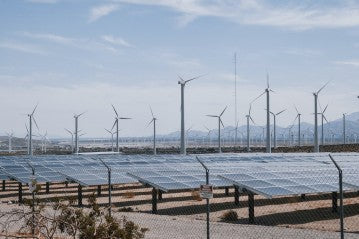
With the increasing interest in renewable energy sources, solar power has become a popular choice for environmentally-conscious consumers seeking to harness the power of the sun to generate electricity. One of the essential components of a solar energy system is the Grid Tie Inverter, which plays a crucial role in converting the direct current (DC) electricity produced by solar panels into alternating current (AC) that can be fed into the electrical grid. In this blog post, we'll dive into the working principle of a Grid Tie Inverter, explore its benefits, and understand why it's a must-have for anyone considering a solar energy installation.
What is a Grid Tie Inverter?
A Grid Tie Inverter, also known as a grid-connected inverter or synchronous inverter, is an electronic device that converts the DC electricity generated by solar panels into AC electricity that can be fed directly into the electrical grid. Unlike traditional off-grid inverters, grid tie inverters do not store excess energy in batteries; instead, they synchronize the energy output with the grid's voltage and frequency, ensuring a seamless integration of solar power into the existing electrical infrastructure.

The Working Principle of a Grid Tie Inverter
1. DC to AC Conversion:
When sunlight strikes the solar panels, they absorb photons, creating an electric current within the photovoltaic cells. This current flows in a direct current (DC) direction. However, most residential and commercial appliances and the electrical grid operate on alternating current (AC). The grid tie inverter bridges this gap by converting the DC electricity produced by solar panels into AC electricity.
2. Maximum Power Point Tracking (MPPT):
Solar panels have an optimum operating point, known as the Maximum Power Point (MPP). This point varies with factors like temperature, shading, and the intensity of sunlight. The Grid Tie Inverter incorporates MPPT technology, which continuously adjusts the voltage and current to ensure the solar panels operate at their MPP. This optimization maximizes the solar energy harvest, increasing the overall efficiency of the system.
3. Synchronization with the Grid:
Grid tie inverters are designed to match the grid's voltage and frequency, allowing them to feed electricity seamlessly into the existing power infrastructure. By syncing with the grid, the inverter ensures that excess energy is not wasted and any deficit is supplemented by the utility provider. This two-way flow of electricity enables consumers to benefit from net metering, where they receive credits for the surplus electricity they contribute to the grid.
Benefits of Grid Tie Inverters
1. Energy Efficiency:
Grid tie inverters are highly efficient in converting DC to AC power, often achieving efficiency levels of 95% to 98%. By utilizing the latest MPPT technology, these inverters ensure that solar panels operate at their peak performance, translating into more energy generation and greater savings on utility bills.
2. Cost-Effective and Low Maintenance:
Grid tie inverters eliminate the need for expensive battery storage systems, reducing the overall installation costs of a solar energy system. Moreover, they have fewer moving parts, leading to minimal maintenance requirements and increased reliability over the system's lifespan.
3. Environmental Impact:
Utilizing grid tie inverters to harness solar power significantly reduces the carbon footprint of energy consumption. By generating clean and renewable electricity, consumers contribute to a greener future and combat climate change.
Conclusion
Grid tie inverters are at the heart of solar energy systems, facilitating the smooth conversion of DC electricity from solar panels into AC electricity that can be used or fed back into the grid. Their advanced MPPT technology and synchronization capabilities ensure optimal energy efficiency and seamless integration with the existing electrical infrastructure.
As a customer intending to invest in solar energy-related products, choosing a high-quality grid tie inverter is essential for maximizing the benefits of your solar installation. With cost savings, environmental impact, and energy independence in mind, grid tie inverters are the ideal choice for those seeking a clean, efficient, and sustainable energy solution. Embrace the power of the sun with a grid tie inverter, and take the first step towards a brighter and cleaner future!

0 comments